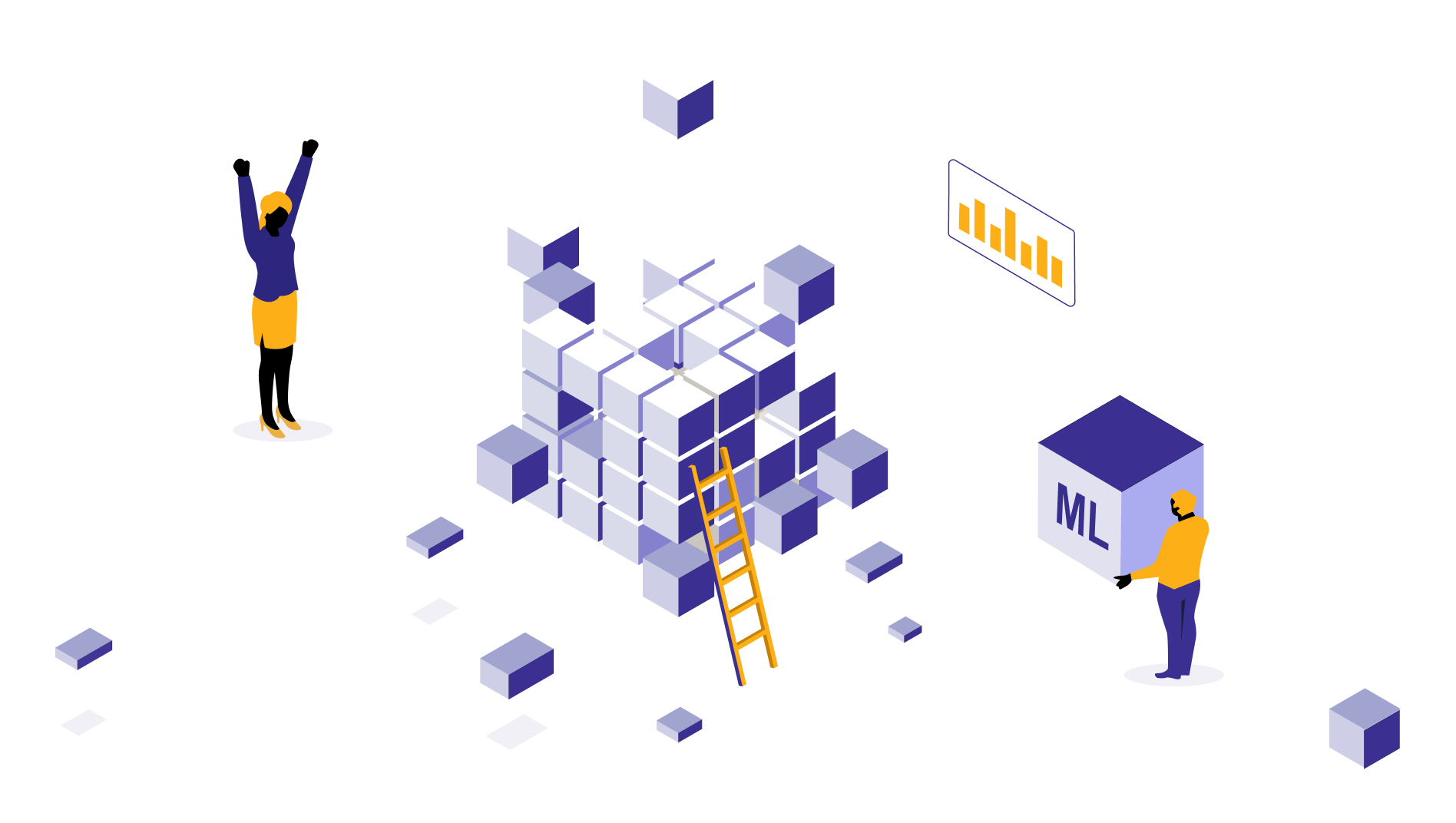Why is your data lake turning into a swamp?
When data is ingested into data lakes with governance, quality checks, or pre-processing, the lakes often become dumping ground – commonly called as swamps. Our solution architect shares why this becomes a common scenario and how to fix data swamps, making them ideal for data analysis again.

Subu
Aug 25, 2025 |
10 mins

What is a data swamp?
A data swamp is a condition in which data lake becomes unusable, as it is filled with data that’s disorganized, unusable, and ungovernable. From a well-structured data storage system, it has become a messy lake filled with too much data that offers no value. That's why data swamps are often:
Uncurated: no standard data ingestion. Filled with duplicates, missing values, and errors.
Unreliable: Poor quality makes it difficult to use for analytics purposes.
Unsecure: sensitive data lying around just like that, inviting serious security and compliance risks.
Vague and opaque: No metadata and documentation around to explain what the data is, its ownership, changes occurred, and more.
Data swamp is a problem because the original purpose for which the data lake was created is still unmet while the storage costs are still being paid for.
Data lake vs data swamp
Differences between data lake and data swamp explained below, with respective factors.
Aspect | Data Lake | Data Swamp |
|---|---|---|
Purpose | Centralized repository that ingests raw and processed data in various formats | Dumping ground without any structure or standards |
Metadata | Rich metadata management and cataloging is there; hence easy to discover data and its characteristics. | Often has poorly managed metadata; users can’t interpret data |
Governance | Policies for ownership, access, and compliance | No governance; unclear ownership |
Data Quality | Standardized ingestion, validation, and quality rules | Inconsistent, duplicate, or stale data |
Usability | Data lake powers BI dashboards, AI/ML use cases, and real-time analytics | Often serves no analytical value |
Costs | Storage costs depend on usage and utilization | Increasing cloud and storage bills with little ROI |
Security | RBAC, encryption, compliance enforcement | Sensitive data vulnerable for security incidents and breaches |
Evolution | Has scope to turn into a data lakehouse (structured + unstructured with ACID properties) | Can collapse into an unmanageable liability |
Data lake vs data warehouse vs data swamp
Data warehouse is a structured storage repository that integrates data from one or many systems. Designed for reliability than flexibility and serves analytics and real-time reporting purposes.
Data lake is more of a flexible data warehouse, with schema-on-read properties, holds a combination of structured, unstructured, and semi-structured data, and needs governance on top of everything.
Data swamp is a form of data lake, where there are no metadata, governance, or quality standards.
Did you know?
Surprisingly, modern data architecture is moving towards data lakehouse concept to avoid data swamps, thanks to the growing capabilities of tools: Databricks, Microsoft Fabric, Snowflake, etc., where the best parts of warehouse and lake come together (flexibility and governance).
How to fix your data swamp?
Your data lake slowly becoming a data swamp. There is still time to save it. Our practical, cost-effective, and less time-consuming strategies to fix data swamps include the following:
Establish data governance
The lack of governance is what turns data lakes into data swamps as without governance, data multiplies unchecked — duplicates, stale copies, and shadow datasets up until one point where it becomes obsolete and untrustworthy. That's why the starting point to fixing swamps is establishing data governance, which includes the following:
Define data ownership, including stewards, owners, and custodians.
Clear policies on end-to-end data lifecycle: retention, compliance, and more.
Enabling role-based access control and other permissions to critical and other data, so not everyone has same level of access to data.
Regular internal and external audits.
The above steps will bring organization to the unorganized data swamp.
Data modeling
A lake without data modeling will only become a dumping ground, which is a swamp. To bring meaning into this, you will need data modeling, which is introducing entities and domains.
Introduce zones -> raw data, curated zone, and reporting ready
Ensure that schemas and naming conventions are consistent across all data sets. For example, customer_ID is used the same way in both sales and finance data.
In case of analytics use cases, use star or dimensional schema.
Data ingestion
Standardizing data ingestion is the next step. Since ingestion is the entry point to a data lake, it needs to have certain rules to not make it a swamp.
There are schedulers and ETL tools like Airflow, ADF, Fivetran, etc. These can enforce validation rules at ingestion stage.
Capture lineage using dedicated tools and frameworks so that every ingested file should have a record of source, timestamp, and owner.
Automate data quality, deduplication, and schema checks, which can report errors every time changes happen.
Implement metadata management
Metadata is the data about your data. Without this, the data lake is just a pool of dark matter.
Without metadata management, data lakes can turn into data swamps due to the following reasons:
Users can’t find what they want.
Analysts spend time rebuilding datasets that already exist.
Multiple versions of data exist, and engineers don’t know what version to trust.
How to fix this with proper metadata management?
Use any one of the metadata management tools like Alation, Collibra, Apache Atlas, Purview from Microsoft, or others.
Update tags properly for the datasets, so that they can be classified automatically.
Start tracking data lineage – from where it came to what transformations happened.
Without data lineage and cataloguing, audits can become a nightmare. Imagine having 600+ customer datasets with no catalog and lineage, which can prolong the audit period to up to 6 months. Cataloging is what makes data lake searcheable and accessible.
Ensure data quality and consistency
Once all the above steps are ensured, the data swamp is already halfway into becoming a place for quality insights. But automating quality and consistency checks will take a step further in generating high-quality, reliable reports in the future. Here are the quality checks required to do to not turn a data lake into a swamp.
Add profiling rules like no negative values for prices, no numbers for categorical responses like names, no missing values in primary keys, etc.
Maintain a quality dashboard where you can find completeness, freshness, and duplicates of datasets.
Set up automated alerts when data doesn't meet the quality standards.
Security
This is the last step to fix the data swamp and turn it into more usable and reliable repository. Security and compliance steps need to be taken to prevent risks and breaches. Here are the best practices needed to be followed, especially if you handle sensitive data.
Data masking and end-to-end encryption with tools like Bitlocker, IBM security, Purview, or others.
Row-level and column-level security for enhanced data protection (already existing in tools like Fabric).
Monitoring data access and management closely.
Use AI for data classification and monitoring
AI can be set up to auto-classify data since it is not possible for humans to handle petabytes of data manually. Custom-built AI models can scan and classify data and understand where it belongs to: accounting, finance, customer service, etc. Here’s how you can integrate AI into your data lakes.
AI can be also employed to alert whenever there is an anomaly: pipeline or schema breaks, suspicious logins, sudden drift in volumes, etc.
Monitor and iterate
Once it is all set, the data lake needs to be regularly monitored so it doesn't again become a swamp. Here are the data lake operational metrics a team needs to track.
Storage costs
Lineage drift
% data with metadata
Query success rate
Final thoughts
A data swamp doesn’t happen out of nowhere—it’s the result of neglecting governance, modeling, metadata, and quality. The difference between a data lake and a swamp is not technology, but regular maintenance, metadata, proper governance, and stewardship.
The future is in data lakehouses — systems that combine the flexibility of lakes with the governance and reliability of warehouses (Databricks, Snowflake, Microsoft Fabric, etc). But no matter what platform you choose, governance, cataloging, and monitoring are what keep your data lake a source of insights instead of a swamp.

by Subu
With over two decades of experience, Subu, aka Subramanian, is a senior solution architect who has built data warehousing solutions, led cloud migration projects, and designed scalable single sources of truth (SSOTs) for global enterprises. He brings a wealth of knowledge rooted in years of hands-on expertise while constantly updating himself on the latest technologies. Beyond architecture, he leads and mentors a large team of data engineers, ensuring every solution is both future-ready and reliable.



